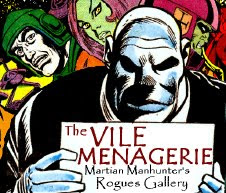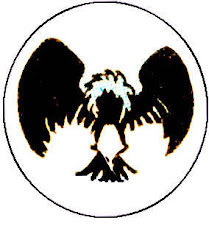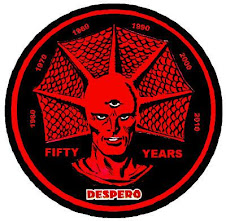LISTEN NOW!
Since I know Rob and Shag internet-well, I've been following The Fire and Water Podcast weekly since its inception. That was the first time I ever listened to any podcast more than once to that point, and it got me to try many more. Shag actually got his start as a podcasting nuisance on Michael Bailey's Views From The Longbox, which had more than a hundred episodes before I'd ever heard of it. I've listened to it off and on since I first tried it during a Rob Kelley guest appearance. Michael Bailey likes Superman a whole lot, and I don't, so that's part of why I've been a less than faithful listener. Another reason is that Rob and Shag's individual podcast episodes tend to be micro, so if I have anything to add, I can leave comments that pretty well exhaust the subject. View's episodes are more macro, like covering the entire history of the Teen Titans in a couple of hours. I found that this triggered a bad OCD type response from me, like the time I was briefly at a super-boring, low paying, b.s. interim job and spent a day or two there working on a reply to that Titans episode before deciding it was best for everyone involved that I give it up. For my own mental health, and possibly Michael Bailey's, I tend to anonymously, silently cherry pick which Views to download.My irregular listenership means I missed Episode 182 when it went up back in March. Michael Bailey was joined by Andrew Leyland to discuss Superman Official Annual 1983, a British black and white hardcover collection of DC Comics Presents #27 (November, 1980), #28 (December, 1980) & #29 (January, 1981). Not only had I done my own coverage of these issues, but I also teamed up with Anj of Supergirl Comic Box Commentary, who did his own overage of Supergirl vs. Mongul before we both revisited the final chapter. It was fun to get third & fourth opinions on this swell story through the newfangled talkie medium. Michael Bailey and Andrew Leyland also handle some material added to the annual that wasn't related to the main story arc, the little differences between the U.S. and U.K. version, plus they delve into a different annual at the end. Also, they briefly look at Mongul's further career in comics.
Beyond spotlighting the podcast, I also figured I'd leave whatever opinions and factoids I had left on the subject of Mongul battling the Man of Steel, Manhunter from Mars, Maid of Might, the Spectre, and more in the comment section here, where the Alien Atlas' fans can join in...





























5 comments:
I can't get excited about the Justice League movies. I mostly only find Superman and Batman tolerable, have no confidence in the forthcoming interpretation of Wonder Woman, and Cyborg means nothing to me. Without good solo movies to get me invested in the JL cinematic universe, there's no draw for me.
Yeah, prototypical Bolland. Recognized and amazed on first sight, via the internet, a few years ago.
I think I was first introduced to Mongul through the cover of Superman #32, but didn't read about him in a story until "Reign of the Supermen." I didn't think much of him as he was beaten by two Green Lanterns and a Flash, but I became a fan with his two-part Post-Crisis origin story in Showcase '95 #7-8, just before he was killed off in Underworld Unleashed. I understood why Mark Waid made that choice, but it still seemed like a waste of potential, so I was pleased when Jeph Loeb introduced Mongul Jr. in the early '00s.
Then I went back and read Mongul's Bronze Age appearances, and realized that was a much superior character. Despite Pete Tomasi first getting me into the character with his origin, the Post-Crisis Mongul was just a grotesquely violent thug who endlessly riffed on one Alan Moore story from 1986. I've never been as wowed by Moore as most, but if you reread "For The Man Who Has Everything" in sequence with Mongul's prior appearances, you can see how much thought and respect Moore paid to Mongul.
Mongul was not originally one of the many Darkseid clones. He was an intergalactic Shah of Iran collecting artifacts of power (before that was Thanos' thing) to overturn his usurper, the Space Ayatollah. Mongul was extraordinarily powerful-- more so than Superman-- but he was disinterested in brawls. In order to regain his throne, Mongul needed to be even more powerful, so he consistently went after new gimmicks that he thought would serve him. Unlike Darkseid, Mongul was petty, so he did hatch revenge schemes against Superman and friends, for both his own pleasure and to keep them out of his way in future gambits.
Now, Mongul wasn't a genius, so he surely stole his shrink ray/cube trap as he attempted to do Warworld, Throneworld, and the Sun Eater. Because each Mongul story had a new gimmick, Moore invented the Black Mercy. He also had Mongul's cube trap destroyed in his fight with Superman, so he didn't have to reuse that device. I suspect that Mongul's dream panel at the end of the story alluded to people he'd swiped gimmicks from in the past. Manhunter = Warworld, Brainiac = shrinking technology, Adam Strange = teleportation.
Post-Crisis, Mongul just punches people. Warworld became less of a Death Star, but it served no greater purpose anymore. Aside from a vague desire for conquest, Mongul no longer had any clear motivation. Later writers kept having him try to recreate Warworld or reuse the Black Mercy, but to no end beyond recreating unimaginative variations on the one Alan Moore story.
Further, the whole point of Mongul was to have a villain Superman needed help to counter, so as soon as Superman beat him one-on-one in a pure slugfest in the very first Post-Crisis Mongul story, that aspect was ruined. Mongul isn't respected and is seen as a rip-off today because that's how he's been written since the '90s.
Jim Starlin is one of my all-time favorite comic book creators, so it's very disappointing that the art quality is so poor as to be unrecognizable in the first part. I usually dislike Romeo Tanghal, but he saved the latter two parts, even as the ability to recognize Starlin underneath his inks varied from panel to panel. Mongul is closely associated with Starlin, who drew his first four appearances and Who's Who entry, but I'm not sure that's deserved. Len Wein, Paul Levitz and Alan Moore wrote one distinct and interesting new villain that was muddled by Starlin's visuals into a Darkseid clone, which surely informed the character's sorry handling after the '80s. Plus, Starlin wrote the recent Villains Month Mongul story, and any hope that he would reassert the character's true origins were misplaced as he simply recapped the milquetoast continuity of later writers, specifically Tomasi.
Martian Manhunter stopped routinely appearing in monthly Justice League of America stories when he got his House of Mystery solo strip in 1964, having been crowded out by Superman and more popular newer characters. His increasing absenteeism was explained away in JLofA #52, and by the time his solo strip ended in 1968, he wasn't appearing anywhere. Mars was destroyed in a 1969 JLofA story, and J'onn was sent to outer space in search on a rocket ship ark that had taken the last survivors of his race to parts unknown. That plot thread wasn't resolved until 1972, when Superman helped J'Onn find and free his people, initiating the founding of Mars II. From there, J'onn had a handful of guest appearances, some cameos, and enjoyed reprints of his earliest tales here and there. A proposed 1977 back-up strip was ended after three installments and swept away by the DC Implosion. In 1980, he helped the JLofA battle Despero in a two-parter, then visited DC Comics Presents. He wouldn't have a significant reappearance until the JLofA 200th issue special before returning for good as part of the 1984 set-up to the Detroit era League.
I understand why fans of the Satellite Era League tend to sideline J'onn J'onzz, since he was never a member in that period. However, these '70s kids fail to realize that he was regarded by '60s JLA readers as a founder, and even with the Post-Crisis "all incarnations" myth dispelled, he's the common thread between Detroit, JLI, JLTF, and "Magnificent Seven" followers. When Meltzer evicted him from the JLA for the first time in 22 years, he broke that legacy in a way the League hadn't been fractured since 1984. I read JLA titles off and on from 1987 until that point, and with the exception of sticking out the 14-issue run of the last JLofA volume, haven't been a reader since 2006.
Personally, as best as I can tell, I was introduced to the Martian Manhunter either through house ads or the Super Powers figure. I bought both Manhunter and Dr. Fate because they were cheap, plentiful shelf warmers from the second wave of figures. Fate was lost/stolen early on, but Manhunter was a favored figure of mine until my brother lost all our G.I. Joe scale toys at juvie "camp" around 1989. By then, I'd gotten to know the comic book version through an issue of COIE, following JLI, and my purchase of the first issue of the Martian Manhunter mini-series. Though I liked the guy, I didn't become a proper fan until the 1996 A Midsummer's Nightmare mini-series and the JLA ongoing that followed. At some point in the late '90s, I started a Web TV fan site for the character, and began seriously delving into study of the character. The dissonance between everything I knew and was learning about the character versus what I was reading in the Ostrander/Mandrake Martian Manhunter series made me hate that book, and even years later with a cooler head, I still feel like it was one of Ostrander's worst efforts. They've started to collect it into TPBs for English speaking audiences though (Spanish audiences have had them for years.)
I also associate Manhunter and Fate, not only because of the toys coming out together, but because neither had a multiversal duplicate on Earth-1/Earth-2, and they seemed to best parallel one another in JLA/JSA crossovers. I liked Dr. Fate, but I never "cracked" the character until we did the Super Powers mini-comics crossover a few years ago. It was as simple as finally realizing that he's a combination of Merlin and Lancelot-- a super-hero mage-knight. Duh!
I haven't read this book...but it was interesting to hear how Superman was out of character in the beginning of the book. And I always liked Starlin because of Rann/Thanagar and Strange Adventures, even though I haven't read enough of his work, so I should add this to the list. I'm in the mood to go looking for some older DC stuff now.
I didn't catch the cover as Bolland, but I am in no way a Bolland expert by any stretch of the imagination--but what threw me off was was the perspective. To me, Bolland always comes off very two-dimensional, and this cover has some foreshortening. I guess he got away from that as time went along.
It's always interesting to note how powerful childhood experiences of certain characters are later in life. I guess those Superpowers action figures really introduced DC characters to a lot of kids. Which is why it bugs me whenever I notice that DC is losing the merchandising war to Marvel every time I go shopping. (Though now my loyalties are drifting anyway.) It also makes me wonder if my current comics experience would be different had I had superhero toys as a kid. The closest I've got is watching episodes of Batman: TAS here and there when I was a kid and the Superman and Tim Burton Batman movies. I don't think there were a lot of superhero action figures in stores when I was a kid. Not like today, where they are everywhere. Kids got it easy today.
I just realized I never heard "J'onn J'onzz" pronounced in a British accent before. It kind of comes out as "John Johns," which I thought was interesting and kind of fun. And I guess I've been pronouncing "Thanos" wrong. The things you learn from audio...
The other day I was trying to remember the first Martian Manhunter story I read, and I honestly couldn't remember what it was. Which is kind of sad. Not sure if it's my current bitterness with DC obscuring that memory or just my lousy memory in general. But I think it was DC: The New Frontier, which is probably why I have a soft spot for that book. Same goes for Adam Strange...which was probably 52, maybe.
Wouldn't it be great if comics had puzzles in them today?! I love hearing stories about how people actually read and enjoyed their comics not as collectibles, but as, well, books. It'll never happen in today's world, but it's fun to hear about.
Dr. Fate is one of those characters I always liked wherever he pops up in a secondary role, but never read any of his solo books. I think he's a good example of great character design melding with an interesting origin, plus a Golden Age heritage, to boot.
I don't listen to too many podcasts, so thanks for highlighting this...it was enjoyable. And, hey, they mentioned an Adam Strange story I've never read, so something to add to my list....!
I love Bronze Age Jim Starlin. I'd recommend to you Essential Captain Marvel, Vol. 2, or if you're in the mood for color, The Life and Death of Captain Marvel. My personal favorite though is Dreadstar Omnibus, which collects the essential first dozens issues of Starlin's best series. Warlock is also great, but the melodramatic psychobabble hasn't aged well, and it's hardly a feel good series.
Super-hero action figures have been pretty consistently available since the '70s. There were a few dry years after Mego, then Super Powers and Secret Wars kicked in. A couple of fallow years, then Toy Biz got started. Now, were they good and affordable toys that inspired new fans? That's the question.
Well, most of the super-hero coloring books I see have puzzles and games in them, especially cheap ones from places like Family Dollar.
Post a Comment